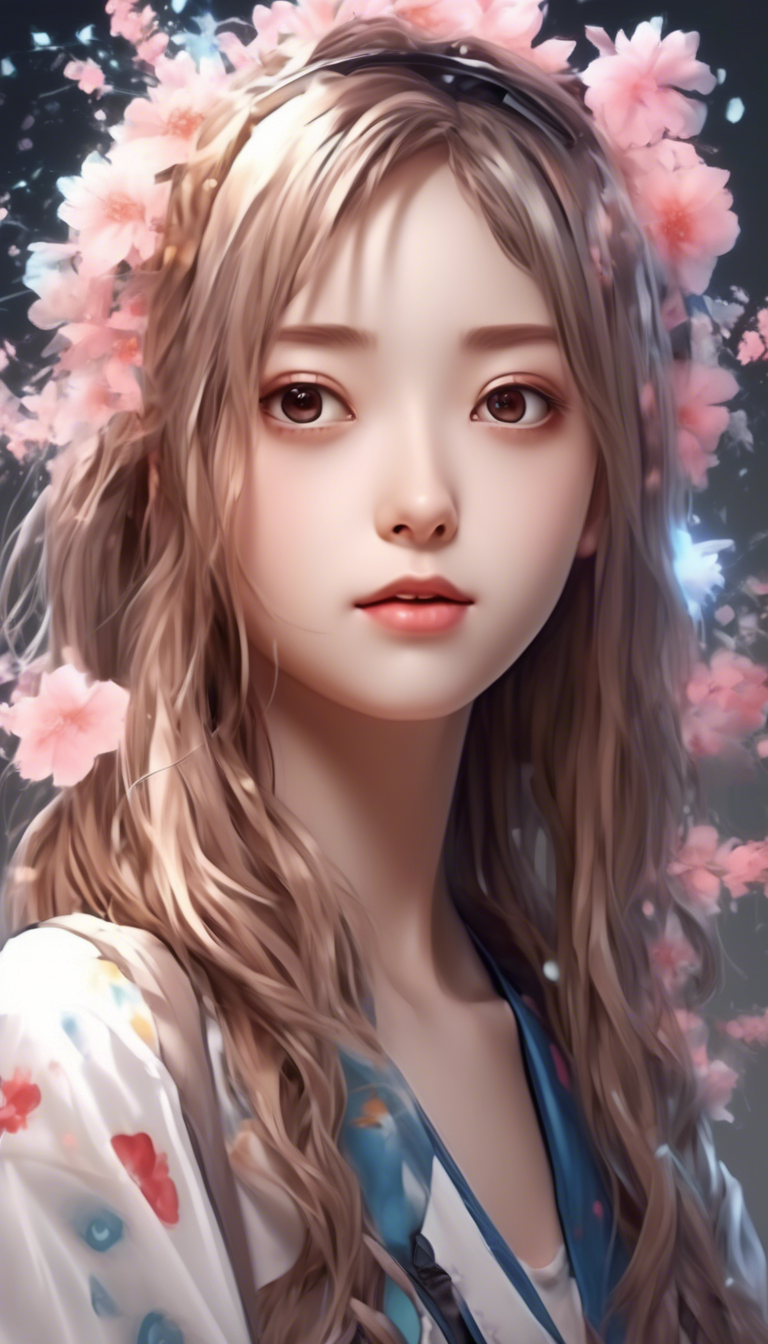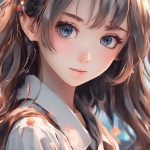The Evolution of AI Art in Anime: Merging Technology and Creativity
Artificial intelligence is reshaping many creative fields, and anime is no exception. The rise of AI art in anime is a fascinating blend of technology and creativity. It allows artists and fans alike to explore new dimensions of storytelling and aesthetics. As AI tools evolve, they continuously impact the anime industry, leading to an exciting fusion of styles and techniques.
Initially, AI art in anime followed simple algorithms that generated basic designs. These early versions often lacked the depth and nuance of traditional anime artistry. However, as machine learning advanced, AI programs began to analyze vast collections of artwork. This enabled them to produce images that not only looked like anime but also conveyed complex emotions and narratives.
You might wonder how exactly AI art works in anime. Here’s a breakdown:
- Data Training: AI models are trained on thousands of anime images, learning various styles, color palettes, and character designs.
- Algorithm Improvement: Regular updates allow AI systems to learn from new trends and techniques, staying relevant in the fast-paced anime world.
- Creative Tools: Artists can use AI-generated artwork as a base, allowing for further customization and refinement.
As AI technology improves, it empowers artists by streamlining their creative process. For example, AI art generators can create background scenes or character poses, letting artists focus on more intricate details. This not only enhances efficiency but also allows creators to push boundaries in their projects.
Moreover, AI art challenges traditional norms within the anime community. While some may argue that AI lacks the emotional depth found in human-made art, it’s important to consider the potential for collaboration. Artists can harness AI as a creative partner, finding new inspiration and techniques that can elevate their work.
Leverage AI and Automation In Your Business
Another remarkable aspect of AI art in anime is its ability to adapt and innovate. With tools like style transfer, users can apply different artistic styles to their characters, merging genres or recreating famous artworks in an anime style. This fusion leads to unique creations that may not have been possible otherwise.
One notable example is the use of AI art in anime merchandise. Fans can now customize figures and posters with AI-generated designs, making them feel more connected to their favorite characters. There’s something special about having a product that combines personal preferences with the magic of AI technologies.
The democratization of anime creation brought on by AI art also deserves attention. You don’t need to be a seasoned artist to create captivating pieces anymore. With user-friendly applications, anyone can experiment with designing characters or settings. This opens doors for many budding creators, allowing them to express their ideas without the barrier of traditional drawing skills.
However, the rise of AI art in anime also brings forth ethical concerns. As AI systems use existing works for training, discussions about copyright and originality are becoming increasingly important. Artists must consider how their work can exist alongside AI systems, ensuring that both can thrive without infringing on one another.
Leverage AI and Automation In Your Business
In many ways, AI art is still in its infancy. It’s critical for creators, fans, and researchers to continue exploring how technology can complement human creativity rather than replace it. By working together, the anime community can foster an environment that values innovation while respecting traditional artistry.
So, what does the future hold for AI art in anime? As technology continues to advance, we may see even more specialized AI tools tailored to genres and styles within anime. Imagine an AI that could not only mimic artwork but also create entirely new narratives, unlocking stories that have yet to be told.
In this ever-evolving landscape, staying informed and engaged will be vital for artists and fans alike. AI art is not just a tool; it’s a collaboration between human creativity and machine learning. Embracing this relationship will help drive the anime industry forward, paving the way for innovative ideas, styles, and stories that enrich our lives.
As you explore AI art in anime, consider trying out various tools or joining online communities where enthusiasts share their creations. The journey into this exciting realm is just beginning, and you can be part of the evolution!
Ethical Considerations in AI-Generated Anime Art: A New Frontier
In recent years, the rise of AI-generated art has created a new wave of excitement within the anime community. Artists and enthusiasts alike are exploring this technology, but it also raises important ethical questions. Understanding these ethical considerations is vital for both creators and consumers.
Leverage AI and Automation In Your Business
The Impact of AI on Creative Ownership
One of the primary concerns with AI-generated anime art revolves around creative ownership. When an AI produces an image based on existing styles or themes, who truly owns that creation? It can get complicated:
- Originality vs. Replication: Many AI art programs learn from a vast database of existing artwork. This raises concerns about whether the new creation is genuinely original or merely a remix of existing styles.
- Attribution: If an AI works with specific artists’ styles, should those artists receive credit or compensation? The line between inspiration and appropriation can be blurry.
Copyright Issues in AI Art
Copyright laws traditionally protect human creators, but they do not necessarily account for AI-generated works. This ambiguity creates several dilemmas:
- Legal Gray Areas: Can an AI generate artwork that infringes upon the copyright of established anime characters or styles? If so, who is liable?
- Future Legislation: As AI art evolves, there may be a need for new copyright laws to address these unique challenges. This could significantly impact both creators and consumers in the anime art world.
Ethical Use of AI Art for Artists
While AI tools can augment human creativity, their ethical use is of utmost importance. Here are some considerations for artists:
- Using AI Responsibly: Artists should be transparent about their use of AI in creating their work. If AI influences the final product, this should be communicated to the audience.
- Supporting Human Artists: Artists may choose to integrate AI tools as a complement to their work rather than a replacement. This approach helps maintain the integrity of human creativity.
Consumer Perspective on AI Art
As a consumer, it’s crucial to understand what goes into AI-generated art. Here’s what you should keep in mind:
Leverage AI and Automation In Your Business
- Know the Source: Investigate the origins of the AI art you admire. Knowing how the art was produced can help you appreciate the context and ethical implications behind it.
- Value Human Creativity: While AI-generated art can be stunning, support human artists by purchasing their work. This reinforces the value of creativity born from human experiences.
The Role of Community Standards
The anime community plays a vital role in establishing standards around the ethical use of AI art. By discussing and promoting responsible practices, the community can shape how AI art evolves:
- Open Discussions: Forums, social media, and conventions can serve as platforms to discuss the pros and cons of AI-generated art.
- Educating New Artists: Experienced artists can share insights into navigating the complexities of AI in art, ensuring new creators understand the potential ethical pitfalls.
Future Implications for Anime Art
As AI technology advances, so too will its impact on the anime art landscape. Future creators need to be mindful of these ethical considerations:
- Innovative Collaboration: Artists could find ways to work alongside AI, fostering a collaborative spirit that respects both human artistry and technological innovation.
- Shaping Public Awareness: Through engagement and conversation, the anime community can advocate for ethical guidelines, ensuring that AI art enhances rather than diminishes the creative landscape.
As we delve deeper into the world of AI-generated anime art, understanding the ethical implications will be crucial. Whether you’re an artist or a consumer, being informed about these considerations can help guide your choices and contributions in this exciting new frontier.
Conclusion
The journey of AI art in anime reflects a fascinating blend of technology and creativity, marking a transformative period for both artists and fans. As we witness the merging of traditional artistry with groundbreaking AI tools, the possibilities for innovation seem limitless. Anime, with its unique stylistic elements and diverse storytelling, is particularly well-suited for AI’s capabilities. Creators can now experiment with new aesthetics, character designs, and elaborate worlds, pushing the boundaries of what’s possible in animation.
However, this evolution isn’t without its challenges. Ethical considerations regarding ownership, copyright, and the role of human artists in a technology-driven landscape have sparked essential discussions. As AI-generated anime art becomes prevalent, establishing clear guidelines and respecting the contributions of original creators is crucial. This new frontier demands a balance that honors traditional artistry while embracing the advantages that AI can bring.
Leverage AI and Automation In Your Business
Moving forward, the collaboration between human creativity and AI technology opens exciting avenues, fostering a rich ecosystem where innovation thrives. For anime enthusiasts and professionals alike, nurturing this balance will be key to ensuring that AI art enhances the anime industry rather than undermines it. By advocating for ethical practices and embracing the endless possibilities that AI offers, we can look forward to an inspiring future where technology and creativity coexist harmoniously, enriching the storytelling landscape for years to come.


